This story is published in partnership with Ozarks Alive, a cultural preservation project led by Kaitlyn McConnell.

RADER - For those who haven’t been introduced, faded signs and a shuttered store might make the community of Rader feel far from the modern world.
Yet a turn of a worn, metal doorknob at the town’s cobblestone church reveals ladies whose lives — and, in some cases, even their names — sew a story that still lives. Every Monday and Wednesday, thimble-clad fingers stitch love and history into quilts at Rader Immanuel Lutheran Church, one of the last remnants of the small community.
The colorful creations they make serve as a social connection, but also as an expression of community and care for others. Some quilts are given away; most are sold and the proceeds donated to worthy causes.
Even though the town feels away from the world, it’s still at the heart of it all.
“They formed this club to help each other,” says Bertha Rader Terry, 95 and one of the club’s oldest participants. Her mother was an early member when it formed in 1936.
The tornado that started it all
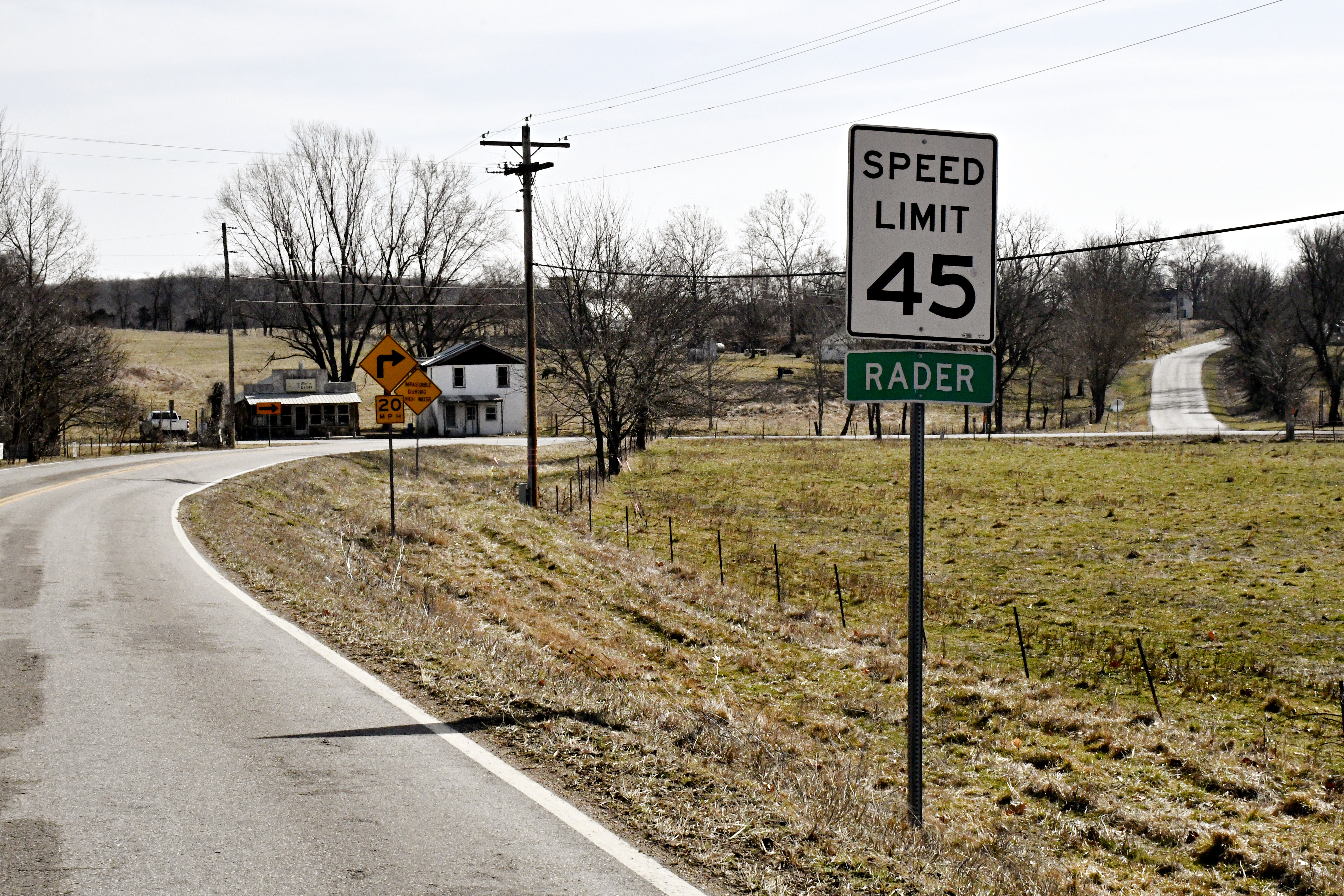
When Terry’s mother and other local women began gathering 87 years ago, the rock church in which wooden quilt frames hang didn’t even exist.
Rader Immanuel Lutheran Church was organized in 1871. It was part of a community in northeast Webster County founded by Joseph and Andrew Rader, two brothers from Tennessee whose dozens of children created enough descendants to probably surpass the town’s population several times. Today they cascade across the country.
The “new” church came to be in 1936. It was constructed after the previous building was blown away in a tornado that killed four people and injured 18.
One of the people who remember that time was Bertha Rader Terry, who was eight years old on that fateful day in March of ‘36 when she ran to the cellar at her grandfather’s farm and came out to find most of the town was “blowed away.”
“I just remember — my uncle knew what it was when he seen it and we went to the cellar,” she says. “I remember coming out in the yard and standing there and watching — it was a’raining.”
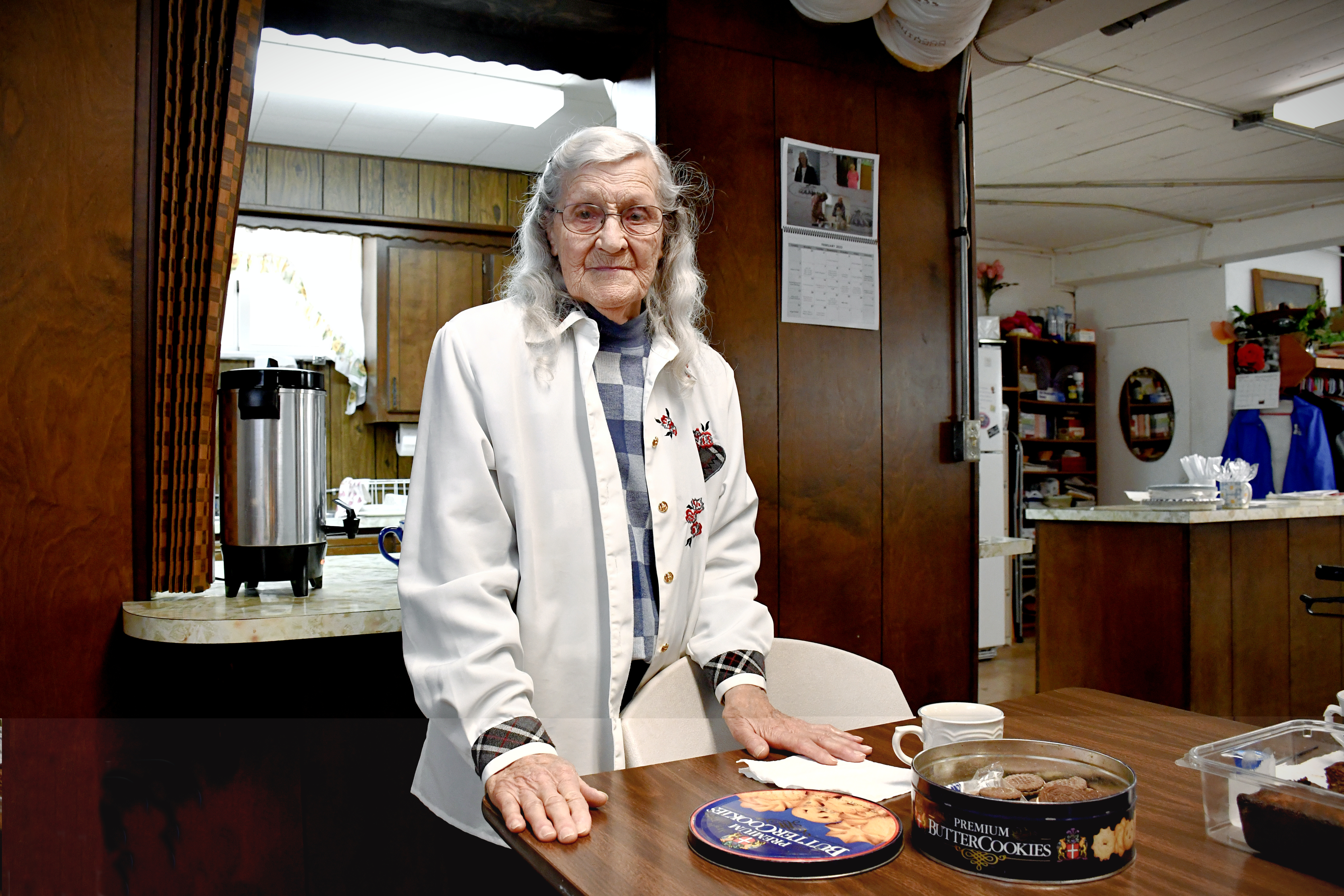
Through the eyes of her memory, Terry remembers seeing the devastation when she emerged from the cellar: Much of Rader was gone. It was a reality that affected both landmarks and lives.
“My grandpa was in a wheelchair, and they couldn’t get him out of the house and to the basement,” says Peggy Rader, a third-generation club member. “So my grandma, and my grandpa and my great-aunt Reba just stayed in the house. It moved the house away and it killed my great-aunt. My grandpa lived about three weeks, but he was hurt real bad. My grandma went to the hospital, and I don’t know how long she stayed but she came through and lived for a long time.”
As they share their personal connections, Rader and Terry sit around a table with cups of coffee, a tin of cookies, and a cake topped with pink frosting in the church’s basement.
In the church’s basement.
Perhaps creating a basement was seen as an ordinary design feature. Or maybe it was viewed as necessity, despite the rocky Ozarks’ ground, given what the town had just experienced.
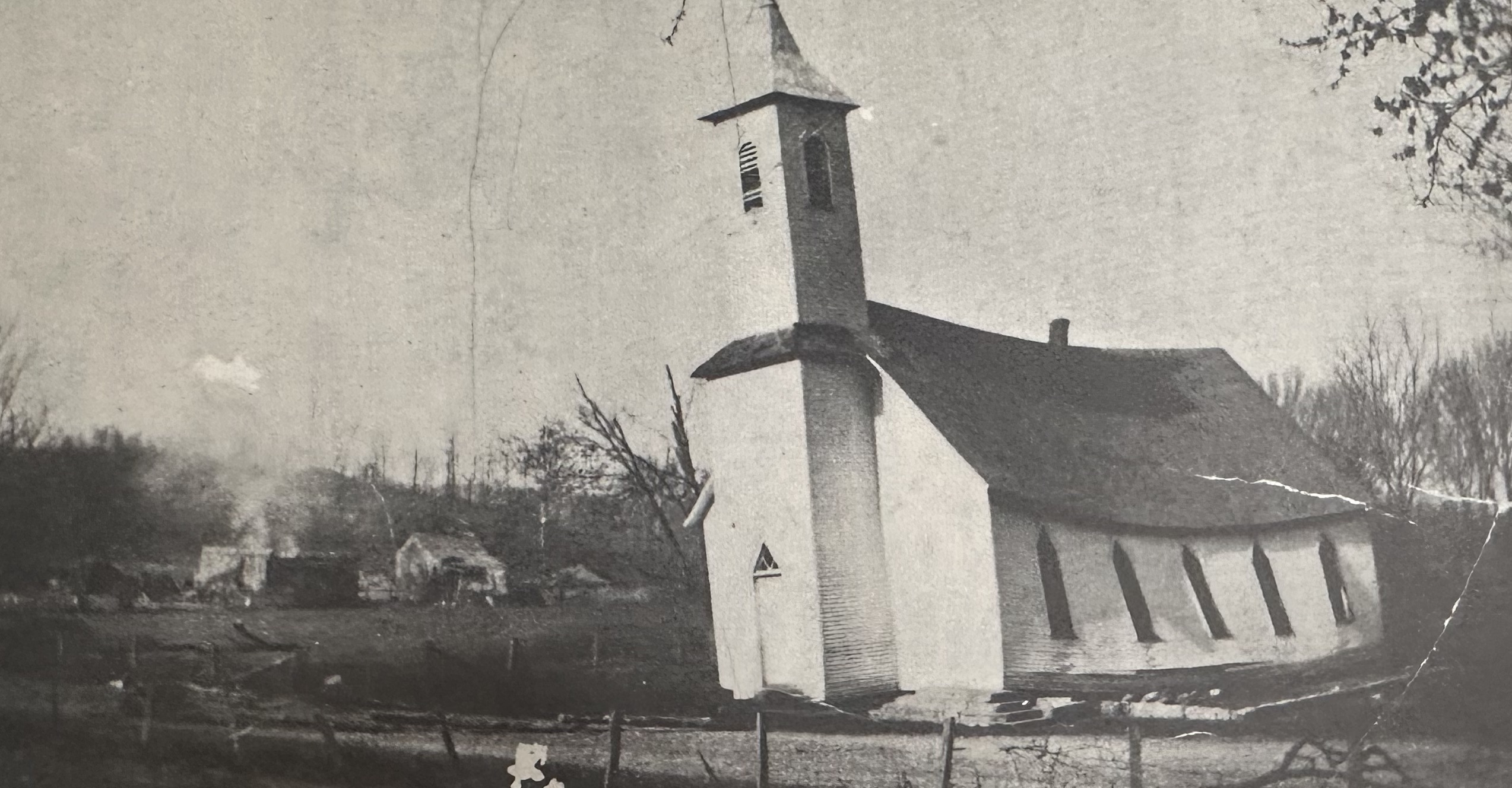

Forming the club
Another effort to rebuild was through a group of women who began meeting in November 1936 as a Webster County Extension Club. Later, they simply organized as the Helping Hand Club, gathering monthly in members’ homes to socialize and work on projects to help each other. It’s how the club is known today.
“Everybody knew how to quilt and sew, so they decided to just have a club of their own,” says Terry. “They formed this club to help. Each one had club once a month on Wednesday, and they’d go and quilt for the hostess or whatever they wanted to do.
“I went ever since I was a little girl. Mom was a member of the club, you know. Back then, they’d bring the other little kids. Everybody had little kids; the bigger ones sat with the little ones while their mothers quilted.”
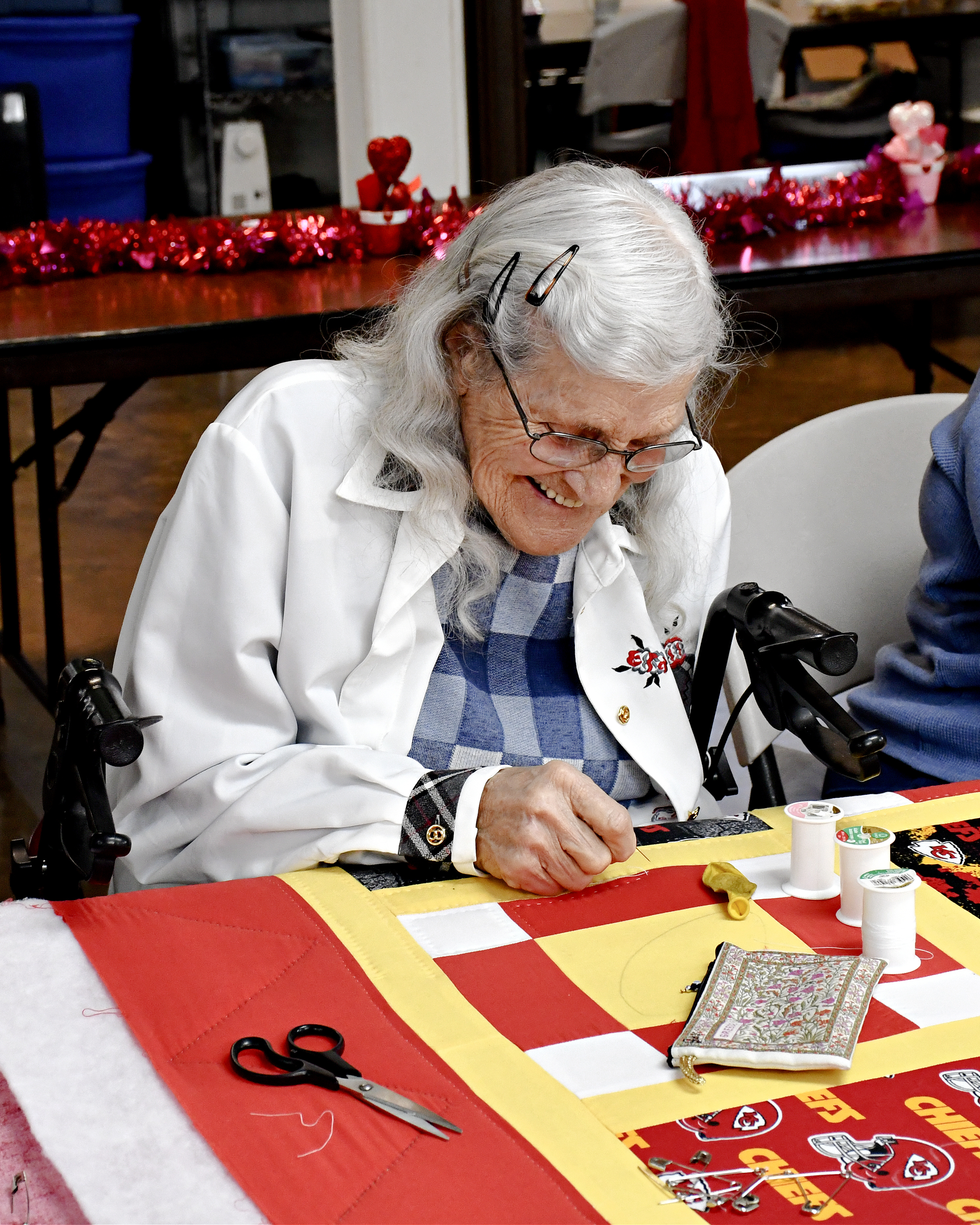
Terry remembers those days, which were filled with farm work, and relative isolation from the rest of the world. She and her husband — who survived the tornado when Pauline Rader, the local schoolteacher, had all children lie on the ground — went through eighth grade. High school wasn’t a possibility, she says.
“I didn’t go to high school. The bus didn’t go (that far) and we had to walk,” says Terry, explaining that the family had to milk and they didn’t have enough time to get to the bus stop. “Now, my brother did because the bus come up there far enough that he could go.”
She and her husband later moved to Kansas City for work, where they stayed for around 18 years before coming home to Rader. For many years since, she’s been part of the club.
Arriving for club
Terry, Rader and Marjorie Welch are already at the church when I pull into the church’s gravel lot around 8:30 a.m. on a recent Wednesday, rays of sun setting the morning sky on fire. Other members gradually arrive, eventually settling around one of two quilting frames that may have been attending meetings longer than some members.
Despite the two frames, on this day there are enough people for just one; they’re working on a quilt for the pastor of the nearby Eureka Methodist Church, who is soon to be married.
“We’ve got a young couple in church we may need to make a quilt for,” a member adds of another potential project.

Those connections between congregations has been a longtime reality in the hills, especially as local populations have dwindled in numbers. The three local congregations – Lutheran, Methodist and Happy Home Presbyterian – have held joint Vacation Bible Schools for kids in the summer. There were once separate women’s groups for the churches, but over time they ultimately combined.
Along the way, they also moved to the church basement where they now quilt, although no one remembers for sure just when that was.

Some members are like Terry, Rader and Kathryn Langdon — who grew up thereabouts, married, left and came back. Others, however, are adopted Ozarkers: Welch is from Hawaii and moved to Rader in 1970 to run a dairy farm with her husband; Diane Whitwer fell in love with the area while visiting friends; and club president Connie Kays is from Texas, but her husband is from Missouri.
“A friend was coming here at the time and she asked me if I wanted to go,” says Kays. “So we came, and Bertha asked, ‘Does anyone want to join the club?’”
Like an altar call for quilters, “I put my hand up,” Kays continues.

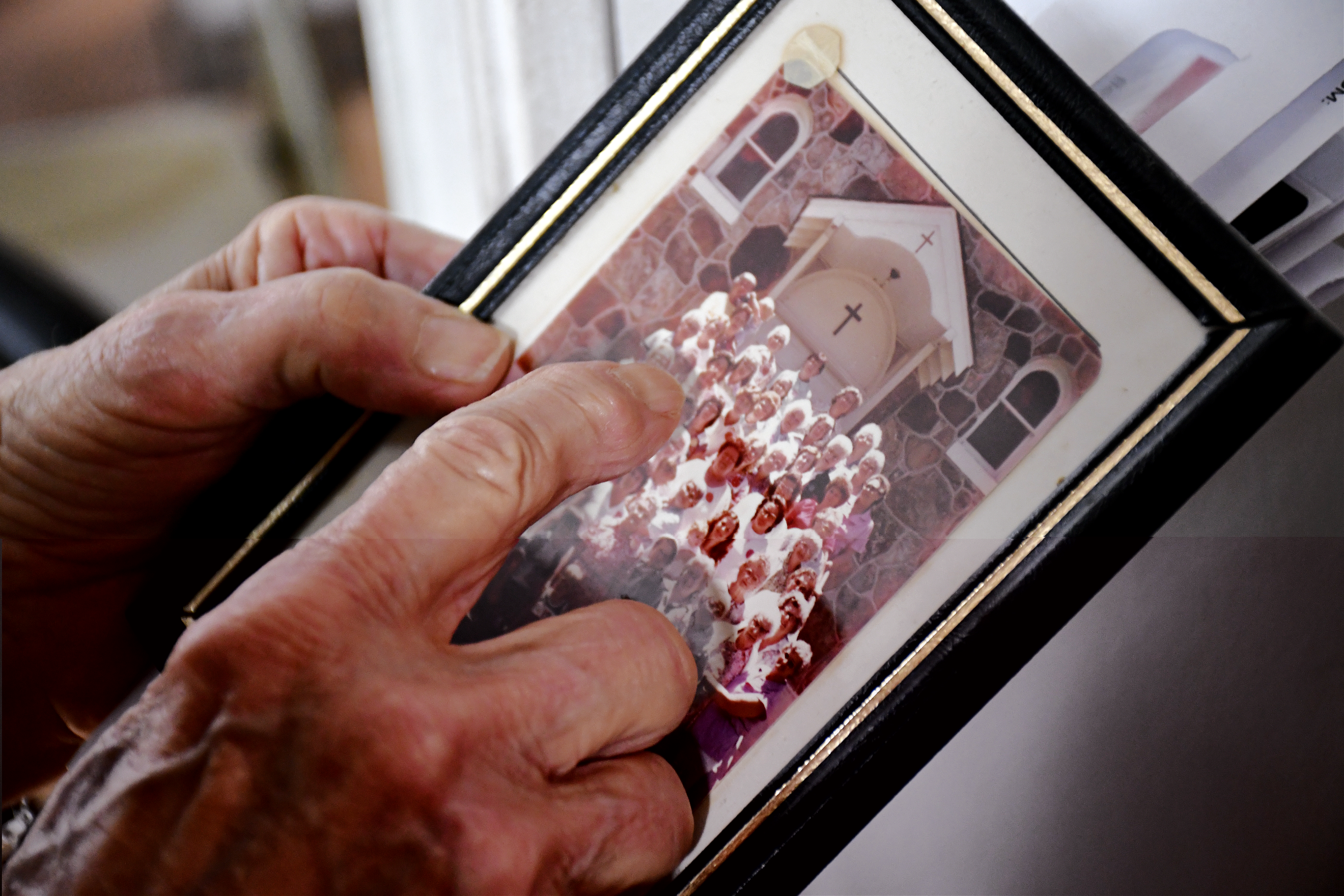
Those attendees are only a few of around 20 members, but it’s a dwindling figure. Terry pulls out a calendar showing faces of members, and points out a few who have recently died.
But while the membership roll is getting shorter, the list of quilts to make is getting longer. Folks send their pieced quilt tops — the colorful top layer — to have them put together. The club charges .35 per thread yard, which comes out in the neighborhood of $100.
That money, and sometimes quilts, are given away in times of need, such as if someone’s home burns. The club has contributed to cancer societies and the local food pantry. They also buy greeting cards, which they send out to people going through difficulties of life.
In addition to quilt sales, the group also raises funds through membership dues — $2 a year and 25 cents per month, says their membership booklet — and hosts bake and quilt sales at the rural Morgan Store, located around five miles away if you take the backroad.
“People have already put in their orders,” says Kays of the upcoming sale, which will likely be in spring. One delicacy is gooseberry pie, long made by Leona Medlock, one of the members the club recently lost.
“Now her daughter is doing them,” a member says.
While women gather to quilt two days every week, the club day is the third Wednesday of the month – an occasion, I learn, means they conduct official business, and that a hostess provides a meat dish for their noontime dinner.
On this particular day, Langdon brings brisket, homemade bread and more for the meal. Like Terry and Rader, she is another example of the invisible bonds with home that perhaps strengthen with time.
“I was baptized in this church, confirmed in this church, and married in this church,” she says of the past — and the future: “My folks are buried out there, my grandpa and grandma are buried out there, my sister and her husband are buried out there, and I’m going to be buried out there.”
But until then, the quilts and chatter and pies and moments found at the bottom of the basement steps continue to stitch time and life together.
“That’s the dash — the dash between 1936 until today. These are the dashes,” says Langdon of life’s moments. An example she shares is when, as a child, a young Terry would carry her at the church.
“When Bertha (Terry) was 16, I don’t know what they were doing down here – maybe quilting,” says Langdon. “But she would carry me. Mom wouldn't carry me. So she would carry me as a little girl.”
Decades later, “These are the memories in between of all the people.
“Hopefully it will continue.”
Quilters in Rader meet from around 8:30 a.m. to 2 p.m. every Monday and Wednesday. All quilters are welcome to attend.

